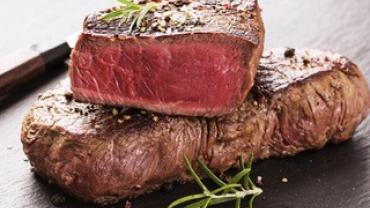
Red meat often gets a bad reputation but recently it has been making a big comeback and it's no surprise with the growing popularity of CrossFitters and fitness and health enthusiasts. Paleo diets have never been more popular. In fact they were the most searched diets on Google in 2013. There have been other strong influences towards grain-free gluten-free diets as well. In 2011 Dr. William Davis exposed the issues with gluten in his Wheat Belly book.
Why beef?
So yes we are seeing a resurgence in beef consumption. High quality beef is superior to many other protein sources as calorie for calorie it is one of the most nutrient-rich foods. Beef contains all of the essential amino acids along with a significant amount of carnitine as compared to other proteins. It is loaded with zinc selenium iron B12 and other B vitamins. In addition there are approximately 2 grams of creatine per pound of beef. Creatine forms an energy reserve in the muscles and brain and is found only in animal foods.
Beef typically gets criticized because of its saturated fat content. Indeed red meat does contain more fat than chicken and other protein sources; however half the fat in beef is monounsaturated. In addition about one-third of beef's saturated fat comes from stearic acid which does not affect blood cholesterol levels.
There is significant debate about whether or not saturated fat in the diet increases risk for heart disease. Lowering saturated fat in the diet will lower LDL cholesterol but it also lowers the HDL the good form of cholesterol which is protective against heart disease. So having saturated fat in the diet may improve the ratio of total to HDL cholesterol and actually reduce risk of heart disease.
Shop wisely
People need to make informed choices regarding the type of meat and the size of their portions. Consuming beef that is pasture-fed and raised without genetically modified feeds added hormones or antibiotics is of the utmost importance.
For the best red meat cuts look for those with loin in the name. For example: sirloin tip steak and top sirloin. Also look for round steaks and roasts such as eye round and bottom round chuck shoulder steaks filet mignon flank steak and arm roasts. Choose ground beef labeled at least 95% lean. Frozen burger patties may contain as much as 50% fat.
How can you reduce some potential health risks and get the benefits of red meat?
Supplements
Beef protein powder supplements are great for the Paleo athletes out there. It is important to use a beef protein supplement that uses the actual lean beef. Several companies that sell beef protein just take isolated amino acids and put into a certain ratio to mimic a complete protein source. This excludes any of the meat-derived bioactive peptides. Beef protein is a good alternative for patients who have sensitivities or intolerances to dairy. It is also a great way to round out the total amino acid intake for the day and get additional key amino acids that help build strong connective tissue. Beef protein has very high levels of the amino acid proline which plays a significant role in the formation of collagen (great for joints and connective tissue) and very high levels of arginine which has been shown to facilitate tissue repair and wound healing adding to the beneficial effects of the protein itself.
by Michael Jurgelewicz